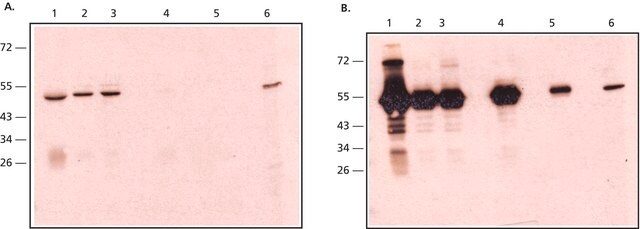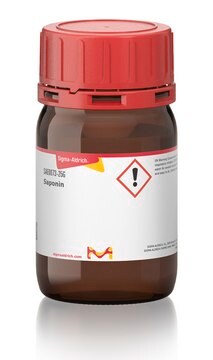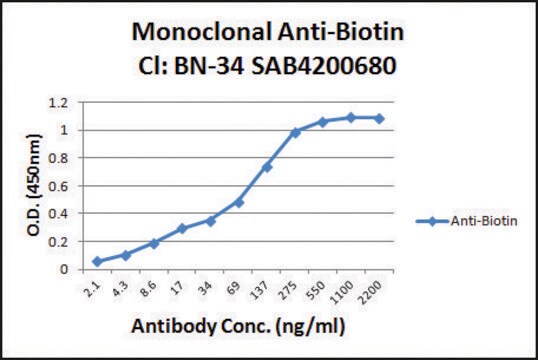Kluczowe dokumenty
R3155
Anti-Rabbit IgG, Native−Peroxidase antibody, Mouse monoclonal
clone RabT-50, purified from hybridoma cell culture
Synonim(y):
Mouse Anti-Rabbit IgG
About This Item
Polecane produkty
pochodzenie biologiczne
mouse
Poziom jakości
białko sprzężone
peroxidase conjugate
forma przeciwciała
purified immunoglobulin
rodzaj przeciwciała
secondary antibodies
klon
RabT-50, monoclonal
Formularz
buffered aqueous solution
reaktywność gatunkowa
rabbit
spodziewany brak reakcji z
human, horse, bovine, cat, rat, chicken, pig, goat, monkey
stężenie
2.5-5.0 mg/mL (antibody)
metody
immunocytochemistry: suitable
indirect ELISA: suitable
western blot: 1:10,000-1:20,000 using 3T3 cell extracts using Anti-Actin (20-33), Catalog Number A5060, as the primary antibody
western blot: 1:10,000-1:20,000 using Hela cell extracts using Anti-Actin, N-terminal, Catalog Number A2103, as the primary antibody.
izotyp
IgG1
Warunki transportu
dry ice
temp. przechowywania
−20°C
docelowa modyfikacja potranslacyjna
unmodified
Opis ogólny
Specyficzność
Immunogen
Zastosowanie
- immunoblotting
- immunoprecipitation
- western blotting
Postać fizyczna
Oświadczenie o zrzeczeniu się odpowiedzialności
Nie możesz znaleźć właściwego produktu?
Wypróbuj nasz Narzędzie selektora produktów.
produkt powiązany
Hasło ostrzegawcze
Warning
Zwroty wskazujące rodzaj zagrożenia
Zwroty wskazujące środki ostrożności
Klasyfikacja zagrożeń
Skin Sens. 1
Kod klasy składowania
12 - Non Combustible Liquids
Klasa zagrożenia wodnego (WGK)
WGK 3
Temperatura zapłonu (°F)
Not applicable
Temperatura zapłonu (°C)
Not applicable
Wybierz jedną z najnowszych wersji:
Masz już ten produkt?
Dokumenty związane z niedawno zakupionymi produktami zostały zamieszczone w Bibliotece dokumentów.
Nasz zespół naukowców ma doświadczenie we wszystkich obszarach badań, w tym w naukach przyrodniczych, materiałoznawstwie, syntezie chemicznej, chromatografii, analityce i wielu innych dziedzinach.
Skontaktuj się z zespołem ds. pomocy technicznej









